
The purpose of this study was to examine the relationship between QTc interval and maximal oxygen consumption(V˙O2max) and body fat distribution in middle-aged men. Abnormal subjects (QTc interval, ≥440ms, n=10) and normal subjects(≤430ms, n=11) using QTc interval based on the Bazzet's equation were involved in the study. After overnight fasting, blood and blood pressure were measured. Abdominal fat area and regional fat compartment were measured by computed tomography(CT) and dual-energy X-ray absorptiometry(DXA), respectively. For V˙O2max, the subjects underwent a maximal graded exercise test on a cycling ergometer. Abnormal group was significantly higher in SBP, basal insulin, HOMA-IR, and leg fat compared with normal. There was a significant relationship(r=.614, p=.03) between QTc interval and V˙O2max in all subjects. Also, partial correlation analysis showed a significant relationship(r=.480, p=.032) between the QTc interval and V˙O2max. Having a QTc interval outside normal range significantly worsened risk parameters for metabolic syndrome, in particular blood pressure and insulin resistance. Moreover, QTc interval was strongly correlated with cardiorespiratory fitness in middle-aged men. This study indicates that further study will be needed to assess the exercise training effects on QTc interval.


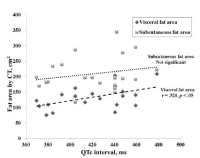
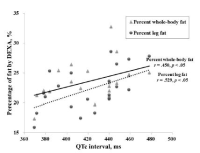
PURPOSE For student-athletes to be able to successfully dedicate themselves to training and competition, the following key factors play an important role: The coach, team climate, and individual motivational characteristics. To test this hypothesis, the structural relationships between having a perceived autonomy support, a caring climate, basic psychological needs, and sport commitment were analyzed. METHODS Participants were 297 high school athletes registered with the Korea Olympic Committee (203 males, 94 females, Mage=17.88 years). Data were collected using sports climate questionnaires for autonomy support, caring climate scale, basic psychological needs scale, and sport commitment measurement. The collected data were analyzed using descriptive statistics, correlation analysis, and structural equation modeling. RESULTS The model’s fitness was indicated by x2/df=2.797 (x2=106.288, df=38), CFI=.977, TLI=.967, RMSEA=.078 (90% CI=.061, .096). Examining the various path coefficients revealed that coach autonomy support had a positive effect on the athlete’s caring climate, basic psychological needs, and sport commitment. The caring climate had a significant effect on basic psychological needs, but did not have a statistically significant effect on sport commitment. Finally, basic psychological needs had a positive effect on sport commitment. CONCLUSIONS Coach autonomy support fosters a caring climate, and athletes who are able to perceive this are able to dedicate themselves to their sport since their basic physiological needs are met. Therefore, coaches should use appropriate coaching strategies to enhance athletes' autonomy and foster a caring climate, as both are essential factors for meeting athletes' psychological needs and promoting sport commitment.
Purpose Recently, studies associated with the negative physical and mental effects of athletes’ pain have received extensive attention. This study confirmed the validity of the pain catastrophizing scale (PCS) developed in clinical settings and is widely used in the sports field, and examined their relationship between the perceived stress levels and fear of pain. Methods The pain catastrophizing consisted of 13 items of three factors which are Helplessness (6 items), Rumination(4 items), Magnification(3 items). To verify the validity, PSC was revised by following the recommended revision guideline procedures. To test the validation of pain catastrophizing, 206 adult athletes were recruited including the collegiate, professional, and national levels. The participants were instructed to complete questionnaires to assess the level of pain catastrophizing, perceived stress, and fear of pain. Confirmatory factor analysis (CFA) to test the fit of measurement model was adopted to examine three higher-order three-factor measurement models. Results In results, confirmatory factor analysis indicated that the Korean version of the pain catastrophizing scale demonstrated a good model fit of measurement when removing one item with a significantly lower factor load as well as the reliability of the scale was reasonable. The pain catastrophizing had a meaningful positive direct relation with perceived stress level and fear of severe pain. In addition, construct validity and predictive validity of PCS showed valid. Conclusions Based on the results of this study, the Korean sports pain catastrophizing scale can be used to measure the subjective pain intensity of Korean athletes. In addition, it is expected to provide fundamental information for evaluating athletes’ post-injury rehabilitation processes.
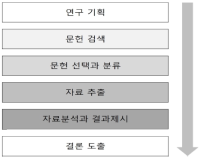
Purpose The aim of this study was to provide athletes and coaches on informations and benefits of a taper through evidence-based scientific studies and literatures in order to optimize an athlete’s top performance for the major competition. Methods Studies and literatures search was conducted using the databases RISS, KISS, SPORTDiscuss. Key words searched: taper AND(competition, OR performance, OR training, OR training). This study were eventually cited by 22 articles for results of this in total 100 articles. Results The training load is remarkably reduced during a taper. With a reduced training load, training intensity should be maintained during the taper. The training load reductions during the taper should be programmed with reducing training volume at 41% to 60% of pretaper training. The reduction of training frequency during a taper means that affect moderately trained athletes and highly trained subjects differently, reducing 30% to 50% of pretaper training and maintaining training frequencies, respectively. Detraining the duration of a taper is not easy. Most athletes is beneficial from a 2-week shorter or longer tapers, depending on their individual profiles of fitness loss, fatigue dissipation, and anxiety. The manipulations of this training program variables usually affect for most athletes and maximal performance gains. Conclusion Training intensity should be maintained during the taper, training volume reductions should be programmed at 41% to 60% of pretaper training. The reduction of training frequency could be reduced 30% to 50% of pretaper training, and most athletes is beneficial from a 2-week shorter or longer tapers. Future researches should be conducted the practical & effectual differences in individual and teamed-based sports after a taper procedure.

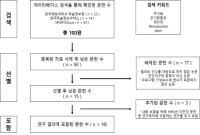
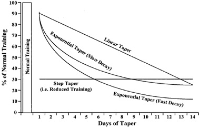
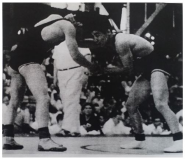
[Purpose] The purpose of this study was to investigate the process of Jang Changsun’s winning gold medal in the 1966 Toledo World Amateur Wrestling Championship and its meaning. [Methods] Jang Changsun and Katsumura Yasuo who had competed with Jang Changsun for the gold medal were selected as participants, a player and an executive who had participated in the Championship were selected as informants. Data had been collected by in-depth interview were analyzed firstly by using the Patton(1991)’s data analysis method, and the following conclusions were obtained by comparing with preceding studies, press releases, reports etc. [Results] Jang Changsun won a gold medal through the three stages of desperate struggles. The first struggle was to loose weight. Jang Changsun lost three times more weight than other players through fasting treatment, intensive training and dehydration in order to secure an advantageous position in the competition. His second struggle was the sparring itself. He made his mind to win gold medal 2 years before the Championship and started to strengthen his physical fitness and polish up his techniques to fight with strong players from powerful nation of wrestling. He finished the sparring by winning 4 games and tieing 2 games resulting in the same deduction points with Katsumura. It was inevitable for him to fight desperately to lose weight again to get gold medal. He eventually won the gold medal by losing his weight until he fainted because of injuries and serious dehydration. [Conclusion] The first gold medalist Jang Changsun contributed a lot to development of Korean sports by offering chance to consider significance of improving elite player’s exercising environment, scientific coaching, gaining self-confidence to win medal, and realizing the importance of sports informations.

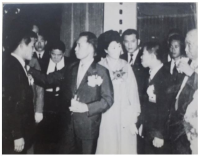

The purpose of present study is to develop the'Golf Mental Scale'that measures and assesses golf players' cognitive, emotional, behavioral response per golf mental factor experienced while competing in depth. In order to achieve this research purpose, Researcher collected raw data of golf mental question through literature review and interview with 8 members of Korean male national golf team and gathered questions per factor through Deductive-Inductive Content Analysis for the raw data. Then, Researcher conducted first and second questionnaire survey targeting 253 of elite & pro golf players and conducted Rasch Model and Confirmatory Factor Analysis for the data collected using SPSS 21.0, Winsteps Ver. 3.65 Program, AMOS 18. The conclusion reasoned out through these research process was as follows: First, golf players' psychological factor structure identified was revealed as Concentration, Self-confidence, Anxiety and Arousal control, Emotion control, Thought control. Total 37 questions were determined. Second, 5 point scale was revealed to be a good fit for Golf Mental Scale. Third, the result of Construct Validity Verification of CFA showed that Golf Mental Scale model was a good fit. Fourth, Reliability of Golf Mental Scale showed high level by recording Cronbach' α value .936. Fifth, Internal Consistency of Convergent Validity and Discriminant Validity was revealed to be satisfied. Eventually, Golf Mental Scale is expected to be used practically as a functional test tool that provides participant's response toward each situation-specific questions concretely and an objective evaluation of participant's golf mental ability per factor considering questions'level of difficulty and participants'characteristic.

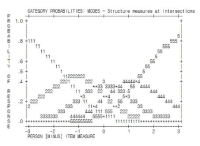
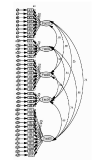
PURPOSE This study aims to analyze elective courses in overseas physical education curricula and explore directions to improve the national physical education curriculum. METHODS Physical education curricula from the Ontario Ministry of Education and New South Wales Department of Education, and an administrative announcement book of the 2022 Revised Physical Education Curriculum were collected and analyzed. RESULTS The Ontario physical education curriculum offers a range of elective subjects that fit students’ need to enter universities and colleges. It also has a systematic curriculum flowchart within elective courses. The NSW physical education places importance on learning life skills and offers content-endorsed courses that comprises core studies and optional modules. CONCLUSIONS This study clarified the differences between the learning content of elective subjects and suggested the necessity of developing plans to provide students with effective course path.
PURPOSE The ethical leadership of Taekwondo instructors plays a crucial role in enhancing the value of Taekwondo. Therefore, this study explores the elements of ethical leadership among Taekwondo instructors by drawing on the insights from Lao Tzu's Tao Te Ching. METHODS Through the Tao Te Ching, an oriental classic containing the ideas of Lao Tzu, we have extracted and discussed the elements of ethical leadership that Lao Tzu conveys to Taekwondo leaders in this era. RESULTS The ethical leadership of taekwondo leaders in the Tao Te Ching was presented as the virtues of inaction and humility as behavioral norms. Inaction as a code of conduct was discussed about a leader who practices inaction in a changing world through subjective thought rather than a meaningful Taekwondo leader who leads Taekwondo with an existing pattern and looks at ethics. A Taekwondo instructor must possess the virtue of humility. A Taekwondo instructor with humility must be glazed, soft, and humble as water. CONCLUSIONS In a Taekwondo culture that follows the Confucian ideology of extreme austerity, Lao Tzu's ethic of non-action and the virtue of humility can be like wearing an ill-fitting robe. However, standing on the edge, outside the frame of reference of the ideologies and values we have come to believe in and follow, and seeing the world as it is, not as it should be, according to the laws of nature, provides a new discourse for Taekwondo philosophy.
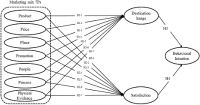
Purpose Limited research has investigated the marketing mix of international sporting events empirically. This study filled this gap by identifying the marketing mix and examined the structural relationships among marketing mix, destination image, satisfaction and revisit intention focusing on foreign spectators of 2019 Gwangju FINA World Championships. Methods The questionnaire was structured in four sections: sporting event marketing mix (seven dimensions and 21 items), host city image (three items), satisfaction (three items) and revisit intention (three items). Analysis of data from 396 foreign spectators in FINA Championships indicated that the proposed model fit the data well. Within a attitude-behavior theoretical framework, this study proposed and tested a structural relationships among the constructs. Results The results of this study presented that (1) product, place, and people in sporting event marketing mix significantly impacted foreign spectators’ destination image, (2) product, price, place, promotion, and physical evidence were appeared to be significant predictors of satisfaction, and (3) destination image and satisfaction had a significant effect on foreign spectators’ revisit intention. Conclusion The findings suggest marketing mix for the international sporting event and its influential mechanism on foreign spectators’ revisit intention. Practically, this study provides important implications for event organizers that can be utilized to develop strategic marketing mix in sporting events to enhance spectators’ destination image, satisfaction, and revisit intention.

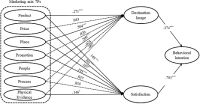
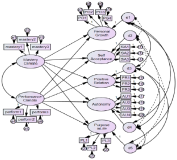
Purpose This study identified the influence of perceived motivational climate on psychological well-being in ballet majors. Methods Participants were 211(male=25, female=186) collegiate students enrolled in ballet department. Measures were The Perceived Motivational Climate in Sport Questionnaire(PMCSQ) and Psychological Well-being Questionnaire. Data were analyzed by using descriptive statistics, reliability test, correlation, and structural equation modeling. Results Results were as follows. First, mastery climate who ballet majors perceive significantly influenced on the five subscales of their psychological well-being: Mastery climate was positively related to personal growth, self-acceptance, positive relation with others, autonomy, and purpose in life. Second, performance climate who ballet majors perceive significantly influenced on the five subscales of their psychological well-being: Performance climate was negatively related to personal growth, self-acceptance, positive relation with others, autonomy, and purpose in life. Model fit indices were acceptable(RMSEA=.070). Conclusion In conclusion, this study indicated that motivational climate who ballet majors perceive was a important situational factor on their psychological well-being.
